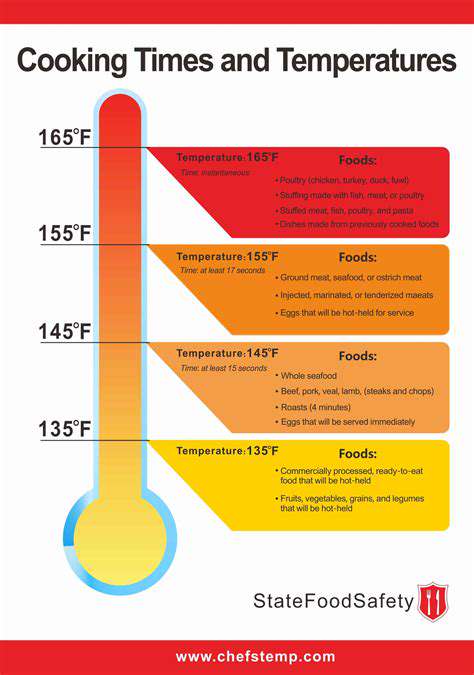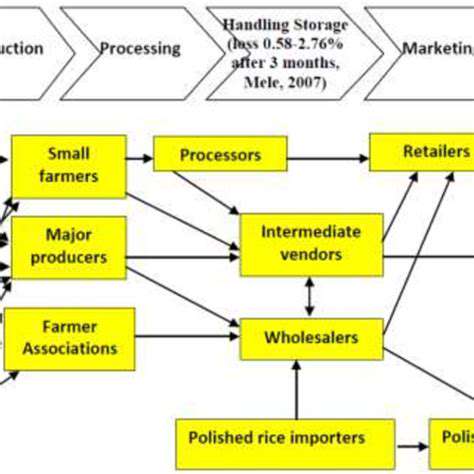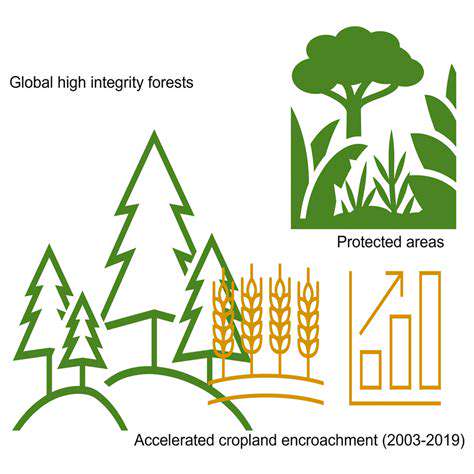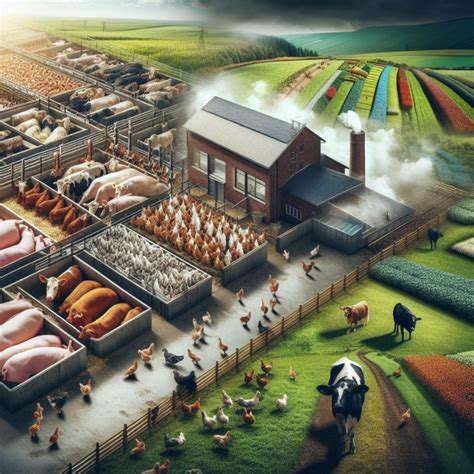The Inefficiency of Linearity
The linear food system, characterized by a take-make-dispose approach, is fundamentally unsustainable. This model prioritizes the production and consumption of vast quantities of food, often with little regard for the environmental impact or the potential for waste at every stage. From farm to fork, significant amounts of food are lost or discarded, contributing to greenhouse gas emissions, resource depletion, and biodiversity loss. This linear system fails to consider the intricate web of ecological relationships and the long-term consequences of its actions.
Resource Depletion and Pollution
The linear food system places immense pressure on natural resources. Intensive farming practices often rely on unsustainable levels of water consumption, fertilizer use, and pesticide application, leading to soil degradation and water pollution. The transportation of food across vast distances contributes to significant carbon emissions and further depletes fossil fuel reserves. The disposal of food waste generates methane, a potent greenhouse gas, exacerbating climate change and further straining the environment.
The Impact on Biodiversity
Monoculture farming, a common practice in the linear food system, often leads to a decline in biodiversity. The loss of diverse plant and animal species reduces ecosystem resilience and increases vulnerability to pests and diseases. This simplification of ecosystems also disrupts the natural balance of the environment, impacting pollination, nutrient cycling, and overall ecological health. These consequences have far-reaching implications for the long-term sustainability of food production.
Food Waste Across the Supply Chain
From farm to table, significant amounts of food are lost or wasted at various points in the supply chain. Post-harvest losses, spoilage during transportation, and consumer discard represent a significant portion of this waste. This waste not only represents a colossal loss of resources but also contributes to greenhouse gas emissions and creates unnecessary strain on the environment. Reducing food waste at each stage of the supply chain is crucial for a more sustainable food system.
The Economic Costs of Waste
The economic costs associated with food waste are substantial. Resources invested in production, processing, transportation, and marketing are lost when food is wasted. Moreover, the environmental costs associated with food waste, such as pollution and greenhouse gas emissions, place an additional burden on society. These combined economic and environmental costs highlight the urgent need for a shift towards a more circular and sustainable food system, one that minimizes waste and maximizes resource utilization.
The Role of Consumer Behavior
Consumer choices play a significant role in shaping the linear food system. Overconsumption, poor storage practices, and a lack of awareness regarding food waste contribute to the problem. Promoting mindful consumption, educating consumers about food storage techniques, and encouraging the adoption of sustainable practices can significantly reduce food waste and promote a more circular approach to food production and consumption. The collective actions of consumers can create a positive ripple effect throughout the entire food system.
The Need for a Circular Food System
Transitioning to a circular food system is essential for mitigating the environmental and economic burdens of the linear model. This approach emphasizes resource recovery, waste reduction, and the reuse of byproducts. Implementing strategies like composting, anaerobic digestion, and creating closed-loop systems for food production can significantly reduce environmental impact and promote a more sustainable and resilient food supply chain. A circular approach to food production is crucial for ensuring long-term food security and environmental health.
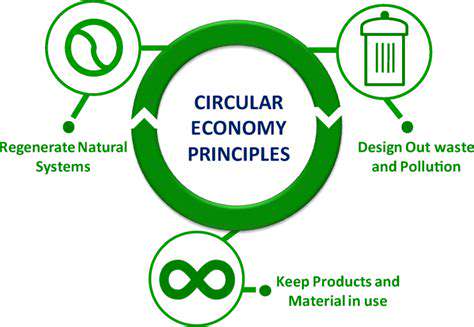
Reducing Food Loss and Waste: A Critical Component of Circularity
Understanding the Scope of Food Loss and Waste
Food loss and waste encompass a significant portion of the global food system, representing a substantial environmental and economic burden. From farm fields to retail shelves to consumer kitchens, food is lost or wasted at various stages. This includes spoilage during transportation, improper storage, and consumer decisions to discard perfectly edible food. Quantifying the extent of this issue is crucial, both for understanding its impact and for developing effective solutions.
The consequences of food loss and waste extend beyond the immediate economic losses to producers and retailers. A substantial amount of land, water, and energy is used in the production, processing, and transportation of this wasted food. This contributes to greenhouse gas emissions, deforestation, and the depletion of natural resources, all of which significantly impact the planet's health.
Economic Impacts of Food Loss and Waste
The economic consequences of food loss and waste are substantial and far-reaching. Food businesses and farmers experience direct financial losses due to spoiled or discarded products. These losses can significantly impact their profitability, potentially leading to reduced investment in sustainable agricultural practices and job losses in the sector. Furthermore, the resources used in producing wasted food could be used to produce more food for those in need.
The economic losses associated with food waste extend beyond the immediate producers. Consumers also contribute to these losses through their purchasing and consumption habits. By reducing food waste at all stages of the food chain, significant economic benefits can be realized, leading to increased efficiency and profitability across the entire system.
Environmental Consequences of Food Waste
The environmental impact of food loss and waste is significant and multifaceted. The production of wasted food consumes enormous amounts of water, land, and energy resources. This contributes to deforestation, water pollution, and greenhouse gas emissions, exacerbating climate change and depleting natural resources. The entire process, from farm to plate, has significant environmental consequences.
Land degradation, water scarcity, and biodiversity loss are all directly linked to the production and subsequent waste of food. Reducing food waste directly translates to preserving these vital resources and protecting the environment for future generations. The sustainability of food systems hinges on minimizing waste at every stage.
Technological Solutions for Minimizing Waste
Technological advancements offer innovative solutions for mitigating food loss and waste. Precision agriculture techniques, such as sensors and data analytics, can optimize crop yields and reduce spoilage. Improved storage and transportation technologies can help maintain food quality and extend shelf life, reducing waste at different stages in the supply chain. This includes the development of more efficient packaging and refrigeration systems.
Innovative technologies, such as smart packaging and waste management systems, can provide real-time monitoring and tracking of food products throughout the supply chain. This allows for better inventory management, reduced spoilage, and targeted distribution, minimizing waste at each step of the process. Properly implemented, these technologies can revolutionize food production and distribution.
Consumer Behavior and Education
Consumer behavior plays a critical role in reducing food loss and waste. Educating consumers about proper storage techniques, portion control, and recognizing signs of spoilage can significantly reduce household food waste. Encouraging the consumption of less-preferred foods and promoting creative recipes that use food nearing expiration can also contribute to minimizing food waste. These changes require a multi-pronged approach.
Policy and Regulatory Frameworks
Effective policy and regulatory frameworks are essential for reducing food loss and waste throughout the supply chain. Government regulations and incentives can encourage the adoption of sustainable agricultural practices, promote efficient storage and transportation methods, and support the development of technological solutions for waste reduction. These policies need to be tailored to specific regional contexts.
Policies that encourage food recovery programs, promote the use of surplus food for animal feed or industrial purposes, and establish clear guidelines for food labeling and expiration dates can significantly impact food waste reduction. These policies are essential for fostering a truly circular food system, where resources are used efficiently and waste is minimized.
Augmented reality (AR) is rapidly transforming the way we interact with digital content, moving beyond the limitations of static pages and into dynamic, interactive experiences. By overlaying digital information onto the real world, AR applications offer a richer, more immersive understanding of the environment and the objects within it. This shift in perspective is crucial for engaging users and providing a more meaningful connection with information. Think about the possibilities: seeing 3D models of products superimposed on physical spaces, or accessing detailed instructions for assembling furniture in a step-by-step, visual guide.
Nutrient Recycling and Regenerative Agriculture: Fostering Soil Health
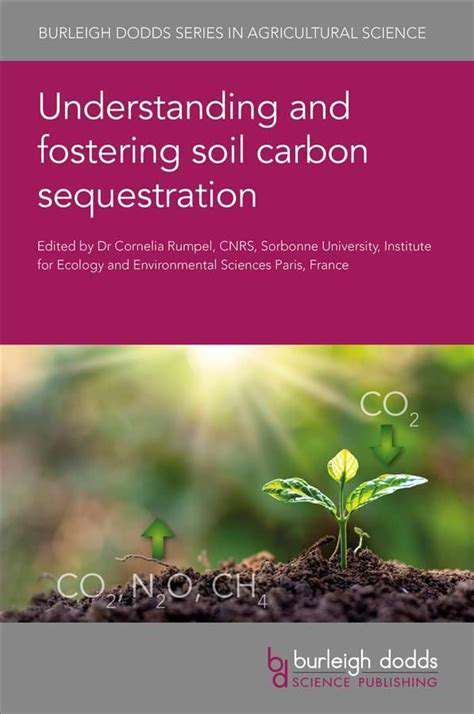
Nutrient Cycling in Ecosystems
Nutrient recycling, also known as biogeochemical cycling, is a fundamental process in ecosystems. It involves the continuous movement of essential nutrients like nitrogen, phosphorus, and potassium through various components of the environment, including living organisms, soil, water, and the atmosphere. This cyclical process is crucial for maintaining the health and productivity of ecosystems, as it ensures the availability of nutrients for plant growth and animal life. The efficient cycling of nutrients is vital for sustainable agricultural practices and ecosystem resilience.
Importance of Decomposition
Decomposition plays a vital role in nutrient recycling. Decomposers, such as bacteria and fungi, break down dead organic matter, releasing essential nutrients back into the soil. This process is essential for the continued availability of nutrients for plant growth. Without decomposition, nutrients would become locked up in dead organic matter, hindering the growth of new life forms and disrupting the natural balance of the ecosystem.
The Role of Plants in Nutrient Uptake
Plants play a critical role in the nutrient cycle by absorbing essential nutrients from the soil. These nutrients are then used for various biological processes, including photosynthesis and growth. The uptake of nutrients by plants influences the availability of nutrients for other organisms in the food web.
Plants are essential in the nutrient cycle, effectively drawing up nutrients from the soil and enabling the continuation of the food chain. This process highlights the interconnectedness of all living things within an ecosystem.
Nutrient Loss and its Implications
Nutrient loss through erosion, leaching, and runoff can have significant negative impacts on ecosystems. This loss can lead to eutrophication in aquatic environments, harming water quality and aquatic life. Excessive nutrient runoff can also affect terrestrial ecosystems by disrupting the natural balance of nutrient cycling and potentially causing harmful algal blooms.
Regenerative Practices for Nutrient Cycling
Implementing regenerative agricultural practices can significantly enhance nutrient cycling in agricultural systems. These practices, such as cover cropping and crop rotation, aim to improve soil health and increase nutrient retention. These methods often involve reducing or eliminating the use of synthetic fertilizers and pesticides, which can have detrimental effects on the environment and nutrient cycling.
Impact of Climate Change on Nutrient Cycling
Climate change is impacting nutrient cycling processes in various ways. Changes in temperature and precipitation patterns can alter the rates of decomposition, nutrient uptake by plants, and nutrient runoff. These alterations can have cascading effects on ecosystem health and productivity. Understanding these impacts is crucial for developing effective strategies to mitigate the negative consequences of climate change on nutrient cycling.
Sustainable Management for Nutrient Recycling
Adopting sustainable management practices is key to maintaining and restoring healthy nutrient cycles. These practices can include implementing conservation tillage, promoting biodiversity, and carefully managing water resources. Effective nutrient management strategies are crucial for preserving ecosystem services and ensuring long-term agricultural productivity. Sustainable nutrient management practices are essential for maintaining the health of our ecosystems and ensuring the continued availability of essential nutrients for future generations. These practices help to maintain the delicate balance of nutrient cycling, ensuring the continued productivity and resilience of our planet.
Consumer Behavior and Systemic Change: The Human Element
Understanding Consumer Motivations
Consumer behavior, at its core, is a complex interplay of factors. Understanding these motivations is crucial for implementing effective circular economy strategies. From environmental concerns and personal values to perceived convenience and cost, a multitude of elements shape purchasing decisions. Analyzing these drivers allows businesses to tailor their products and services to resonate with consumers and foster a shift towards more sustainable choices.
Consumers are not monolithic entities; their motivations vary based on demographics, socioeconomic status, and cultural contexts. Recognizing this diversity is essential for developing targeted strategies that address the specific needs and concerns of different consumer segments.
The Impact of Perceived Value
In the context of circular economies, perceived value extends beyond the immediate price tag. Consumers increasingly consider factors like product durability, repairability, and the environmental footprint of a product when making purchasing decisions. Businesses that highlight the long-term value proposition of their products, emphasizing their ability to be reused, repaired, or recycled, are more likely to attract environmentally conscious consumers.
Offering extended warranties or repair services can enhance the perceived value of a product by reducing the perceived risk associated with potential failure. This approach encourages consumers to invest in products with a longer lifespan, reducing waste and promoting a circular economy.
The Role of Education and Awareness
Education plays a pivotal role in fostering a shift towards circular economy principles. Raising consumer awareness about the environmental impact of their choices and the benefits of circular solutions is essential. This includes educating consumers about the lifecycle of products, the concept of waste reduction, and the various ways they can participate in a circular economy.
Effective communication strategies that highlight the benefits of circular economy practices, both for the environment and for consumers themselves, are crucial for driving adoption.
Addressing Barriers to Change
Despite the growing awareness, various barriers hinder the widespread adoption of circular economy principles. These include a lack of readily available circular alternatives, a lack of consumer trust in new systems, and the perceived higher cost of sustainable products. Overcoming these barriers requires a multi-faceted approach, involving collaborative efforts between businesses, governments, and consumers.
The Importance of Systemic Change
Shifting consumer behavior requires more than just individual actions; it necessitates systemic change. This involves policy interventions, technological advancements, and incentives that encourage the development and adoption of circular economy models. Governments can play a crucial role by implementing policies that support circular economy initiatives, such as extended producer responsibility schemes.
Businesses can also contribute by investing in research and development of circular products and processes. This includes developing innovative materials, design strategies, and business models that promote reuse, repair, and recycling.
The Power of Collaboration and Innovation
Transforming consumer behavior toward a circular economy requires collaboration between various stakeholders. Businesses, governments, and consumers must work together to create a system that incentivizes sustainable practices. This collaborative approach fosters innovation and accelerates the development of circular solutions.
Innovative business models, such as product-as-a-service, can drive consumer adoption by offering alternative value propositions that align with circular economy principles. This shift towards a collaborative and innovative approach is critical for achieving systemic change.




